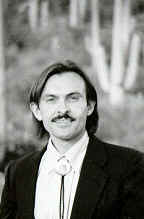Day 12 was a low key day in which our only formal activity was a pipe ceremony for our hosts. However, informal discussions continued well into the evening, and the main thrust of today's discussions related to the embedding of story in community. One elder told us that non-indigenous people perpetually grossly underestimate the power of community. Stories are not stories if told in isolation -- they must be told to someone.
We talked about our Hocokah Project, which aims to enroll everyone in a healing circle. I have written about the concept of healing circles and talking circles in Healing the Mind through the Power of Story, and will summarize the concept here. A healing circle, or hocokah in Lakota, is a group of people who gather together on a regular basis for the purpose of being healing for each other. Hocokahs historically included elders, though today there are not enough elders to go around, so some healing circles must make do without benefit of elder. The simplest way to begin a healing circle is with a talking circle. In the talking circle format, whoever holds the talking stick starts the process by posing a question or a thought followed, sometimes, by a prayer. The stick is passed clockwise. Whoever holds the stick talks as long as he or she wishes without interruption. Then, the next person talks. The rules are simple: talk if you have the stick. Don't talk if you don't have the stick. The exercise promotes listening, because when one can't talk, one is forced to listen. The usual outcome of a talking circle is a more concrete proposal for healing for one member of the circle who is suffering. What surprises some is how quickly people figure out how to be healing for each other, without being told what to do. We did a study of talking circles done after hours in primary care offices and found that people who participated for at least four sessions received as much benefit as people who received treatment.
We cannot change without community participation. If we wish to perform different stories, our community must agree to let us. Change in isolation is not change, for change requires us to behave differently in relationship with others. Stories are social neurotransmitters, meaning that they transmit information among people in a social network. If we are to be different, others must give us the permission and the space to be different. Research has shown that people, who leave their community to go to treatment programs, soon return to their old behaviors if they return to the same social network that they left. Others influence and maintain our behavior, and others must permit and support us to change, as we allow them to change.
Thus, the final message of our Australian journey relates to the power of community, that we can't change without community, and that the participation of our community is required to change. The work that we need to do is done with others. This is commonly known in indigenous communities. Healers who doctor others do so with an audience. The distinction between treatment room and waiting room is non-existent. The healer takes breaks from the active healing work to tell stories that support the healing. Audience is necessary, because audience bears witness to the story we wish to live.
Tomorrow I give an academic talk at the University of Melbourne to complete our journey, and the next day we fly home. We are already planning the next trip, which will consist of another week of culture camp followed by a week of collaborative narrative training in which the elders and culture keepers of the land co-teach with us how to do narrative practices within an indigenous paradigm, aiding those who work in aboriginal communities as well as those who wish to apply aboriginal insights to their work anywhere.




